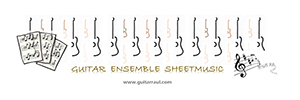Piotr Pozniak
A document from historic times provides the researcher, on the one hand, with information about the individual case – typical or otherwise – represented by the source itself; and on the other hand, with information of a broader character, concerning the life of a certain community. The paper and binding, handwriting and repertoire analyses presented allow us to draw conclusions from these analyses and construct hypotheses about both of these aspects. Since this is the only surviving lute tablature written in the 16 th century within the Polish-Lithuanian state, the number of general conclusions cannot be large, for it is not possible to determine the measure in which the information is typical; nevertheless, some conclusions can be drawn.
The manuscript was purchased in 1937 at an antiquarian bookstore in Vienna, and we do not know what happened to it before then. Since that year, it has been held by the Library at the University of Lvov (now Lviv, a city belonging at the time to Poland, and since World War II, to the Ukraine), under call no.1400/I. Its content was studied by literary historian J. Krzyz˙anowski, who in 1938 published and discussed the poems inscribed in the source ; as well as by musicologist M. Szczepan ´ska, who published an article about the tablature in 1950 on the basis of her notes from before the war . Next, several works were published in three anthologies by Z. M. Szweykowski , Z. Ste ˛szewska and P. Poz´niak .In 1991, at a congress in Tours, I made public a list of 14 intabulations from the tablature, together with identification of their models.
This list, containing numerous corrections relative to M. Szczepan´ ska’s version, was published in print in 1995. Simultaneously and independently of my investigations, research on the Kraków tabulature was being conducted by Levi Sheptovitsky, who in 1998 published a short description of the source and a list of the works preserved in it (without musical incipits). Here, the author repeated correctly almost all of the information about intabulation models and – following Brown’s bibliography – mentioned other lute arrangements; indicated Dowland as the composer of three fantasies, as well as showing concordances to a fourth fantasy and two dances; described the harmonic schemes of several dances, drawing attention for the first time to the fact that the piece entitled with the incipit ‘Surrexit Dominus’ is based on a romanesca
scheme; he also gave information about new editions of the lute pieces and vocal models. In 1999, another description of the tablature and list of its contents was published in print ; it repeats many of Szczepan ´ ska’s errors…)
Musica Iagellonica2004 ISSN 1233–9679





